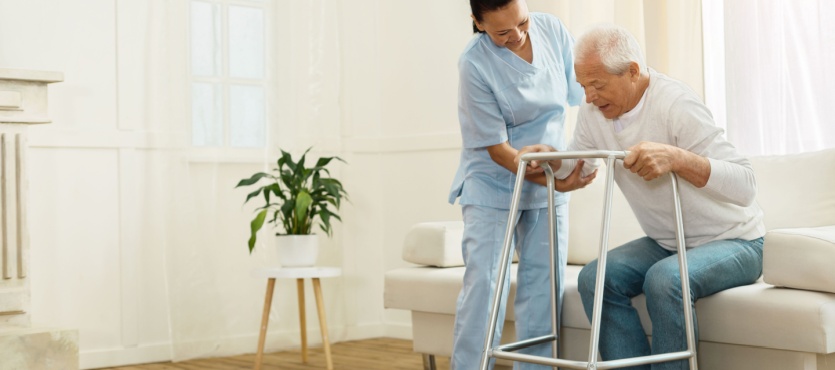Falls are a major health concern for seniors, often leading to serious injuries, decreased mobility, and a decline in overall well-being. As individuals age, their bodies undergo changes that can make balance, coordination, and mobility more challenging. Reduced muscle strength, vision impairment, and slower reaction times all contribute to an increased risk of falls. However, by understanding these risks and taking proactive measures, seniors and their families can create a safer living environment that supports long-term independence and confidence.
Understanding Fall Risks in Seniors
Aging naturally brings physical and cognitive changes that can increase the likelihood of falls. Muscle weakness and joint stiffness make movement more difficult, affecting stability and coordination. Many seniors experience vision changes, such as reduced depth perception or difficulty adjusting to different lighting conditions, which can cause missteps. Medications prescribed for high blood pressure, anxiety, or sleep disorders may cause dizziness or drowsiness, further heightening fall risks.
Chronic conditions such as arthritis, osteoporosis, and diabetes can also impact mobility and contribute to instability. For some seniors, even minor obstacles in the home can pose significant hazards. Slower reaction times make it harder to recover from a misstep, making falls more likely to result in injuries. Identifying these risks is the first step in developing strategies to prevent falls.
Creating a Fall-Proof Home
Adapting the home to be more senior-friendly is one of the most effective ways to prevent falls. Proper lighting throughout the house is essential, especially in hallways, staircases, and bathrooms, where visibility is crucial. Motion-sensor lighting can be a helpful addition to ensure that seniors do not need to fumble for light switches at night.
Clutter-free spaces reduce trip hazards, so furniture should be arranged to allow for easy navigation. Loose rugs and electrical cords should be removed or secured to the floor to prevent accidental tripping. Installing grab bars in the bathroom, near the toilet, and in the shower provides much-needed support. Non-slip mats in wet areas and handrails on both sides of staircases further enhance stability.
Flooring choices also play a role in fall prevention. Slippery surfaces should be avoided, and if possible, carpeting with a low pile can provide better traction. Ensuring that commonly used items are within easy reach minimizes the need for stretching, bending, or using unstable objects like chairs for support.
Encouraging Mobility and Balance
Physical activity plays a vital role in maintaining mobility and reducing fall risks. Strength training exercises, such as light resistance training or bodyweight movements, help seniors maintain muscle mass and stability. Stronger leg muscles improve mobility, making daily activities easier and safer.
Balance-focused activities like Tai Chi and yoga enhance flexibility, coordination, and overall body awareness. These gentle exercises also help seniors develop confidence in their movements. Simple activities, such as standing on one foot or practicing heel-to-toe walking, can strengthen stability over time.
Regular walking supports cardiovascular health and builds lower-body endurance. If walking outdoors is challenging due to uneven surfaces, indoor walking or treadmill use can provide similar benefits. For seniors with significant mobility concerns, physical therapy offers tailored exercises that focus on strengthening weak areas and improving balance.
Health Management and Fall Prevention
Good overall health is essential for reducing fall risks. Regular vision and hearing check-ups ensure that seniors can navigate their environment safely. Poor eyesight or hearing loss can contribute to balance problems, making it essential to update prescriptions or use assistive devices as needed.
Medication management is also critical, as some prescriptions may cause dizziness or drowsiness. Seniors should consult with healthcare providers to review their medications and discuss potential alternatives if side effects increase fall risks.
Proper footwear supports stability and comfort. Shoes with non-slip soles, a secure fit, and good arch support are essential for reducing slips and trips. Indoors, seniors should avoid walking in socks or loose-fitting slippers unless they have grip pads.
A well-balanced diet and adequate hydration play a role in maintaining energy levels and preventing weakness or dizziness. Dehydration and poor nutrition can contribute to unsteadiness, making seniors more prone to falls. Ensuring that they eat nutrient-rich meals and drink enough fluids each day supports overall strength and coordination.
Trust USA Home Health: Promoting Senior Safety
At Trust USA Home Health, we recognize the importance of maintaining a safe and comfortable home environment for seniors. Our caregivers provide assistance with mobility, fall prevention strategies, and home safety modifications to help seniors maintain their independence. We also offer companionship and support, ensuring that seniors receive personalized care tailored to their needs. If you or a loved one need assistance with creating a safer living space, contact us through our contact page. Together, we can help ensure a safer and more confident future for seniors.

